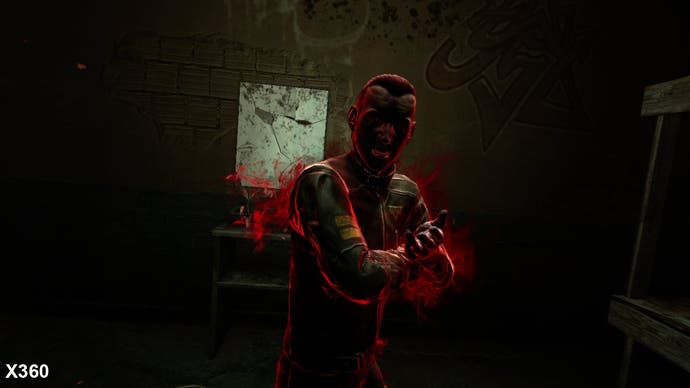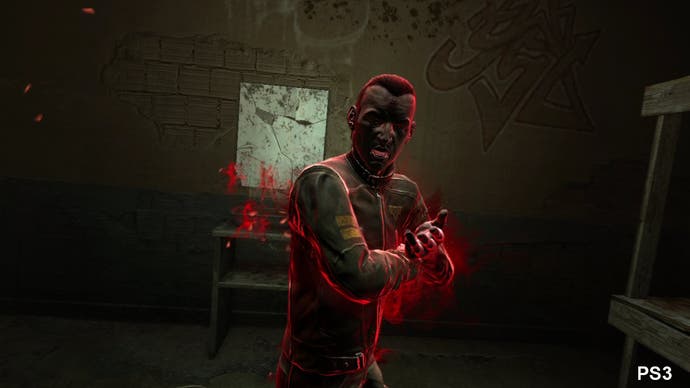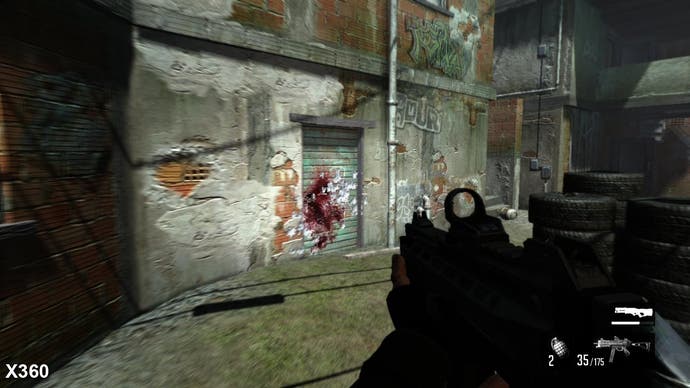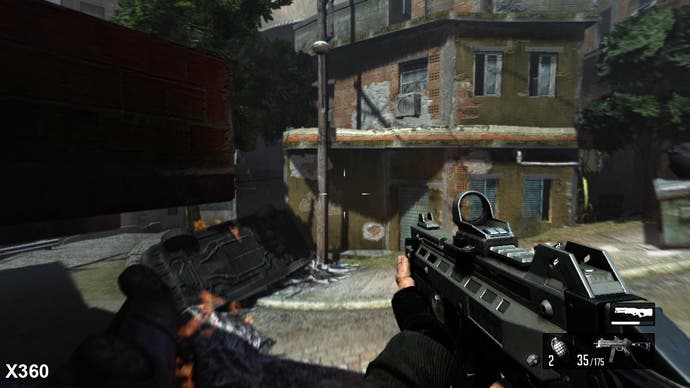Face-Off: F.E.A.R. 3
Why Fettel for less?
As you might expect, bearing in mind the migration to a new engine, things have changed considerably in F.E.A.R. 3. As you can see in the above head-to-head video and in our comparison gallery, while both versions still output their framebuffers at 720p, there is a distinct blur over parts of the image, which tends to smooth over some of the finer details present throughout the game. Curiously, objects appear rather sharp up close, but look quite soft when viewed from a distance.
Day 1 is using a variety of post-processing effects to add atmosphere to the game but this seems to be having a direct effect on the use of MSAA in the engine: the edge-smoothing is present on some surfaces, but it looks to be heavily broken in almost every instance. Instead, the developers are using what appears to be a depth-of-field-type edge blur, which provides coverage on objects far away to the player, but leaves ones close up mostly untouched. This accounts for the softness, which adds to the artistic style of the game in darker areas, but negatively impacts overall image quality elsewhere.




Thankfully, large differences between both versions of the game seem to be few and far between. The baseline artwork is basically identical: textures vary from being rather low res and blurry to appearing quite sharp and detailed on both systems. In most areas full resolution alpha buffers have been employed on both - excepting the red energy that surrounds the supernaturally reincarnated Fettell, which is actually rendered out using a lower res buffer on both consoles.
Additionally, the lighting implementation - essential in generating F.E.A.R. 3's atmosphere - appears to be effectively identical on 360 and PS3. Both versions feature some great use of dynamic light sources which create a real sense of ambience and depth. The fundamentals of the game's graphical make-up are the same then, but not every element is quite so closely matched: shadow implementation is somewhat different, with a clear 360 advantage.




On the PS3 we see the use of PCF (percentage closer filtering), which results in noticeably harsh edges that can look rather unsightly and many shadows are also rendered in a much lower resolution. In comparison, filtering is done using a dithered implementation on the 360, making shadows look smoother as a result. There are also various shadows which are missing from many areas on the PS3, which can lead to a sense of there being less depth and detail present in the scene.
The other bugbear we have concerns the game's gamma set-up. The output looks to have been poorly calibrated on the 360, resulting in a much darker image with plenty of black crush. Shadow detail is quite often lost in a veil of blackness in the darker areas of the game, and daylight scenes appear more than little too dim on many occasions. While the problem can be solved via an in-game adjustment, you'd think that the developers would be choosing an optimal set-up based on standard RGB values that give the same results at default settings on both systems - something that definitely isn't happening here.
Overall, the console versions of F.E.A.R. 3 are pretty decent, although both are far from being spectacular-looking games. If anything, the engine appears somewhat tired and generally rather dated, despite some key features which really shine - the AI, the interesting post-processing effects and the use of dynamic light sources really make this game stand out from the competition.
The PC version of the game does improve some of the less impressive aspects of the console game, but despite some upgrades, it's still disappointing to see some low resolution artwork in there. However, it is also by far the best version of F.E.A.R. 3 available, with the ability to run at much higher frame-rates and resolutions providing a tangibly more immersive, playable experience.
Visually, the added benefits of the PC release aren't anything unexpected, but do serve to provide a more polished presentation on the whole. As you can see in our 720p comparison video, texture detail has been upped in many places and we also see a number of higher precision effects. Shadows feature smoother edges due to better quality filtering, whilst the implementation of screen-space ambient occlusion (SSAO) is more refined, appearing stronger and adding more depth to the scene.







